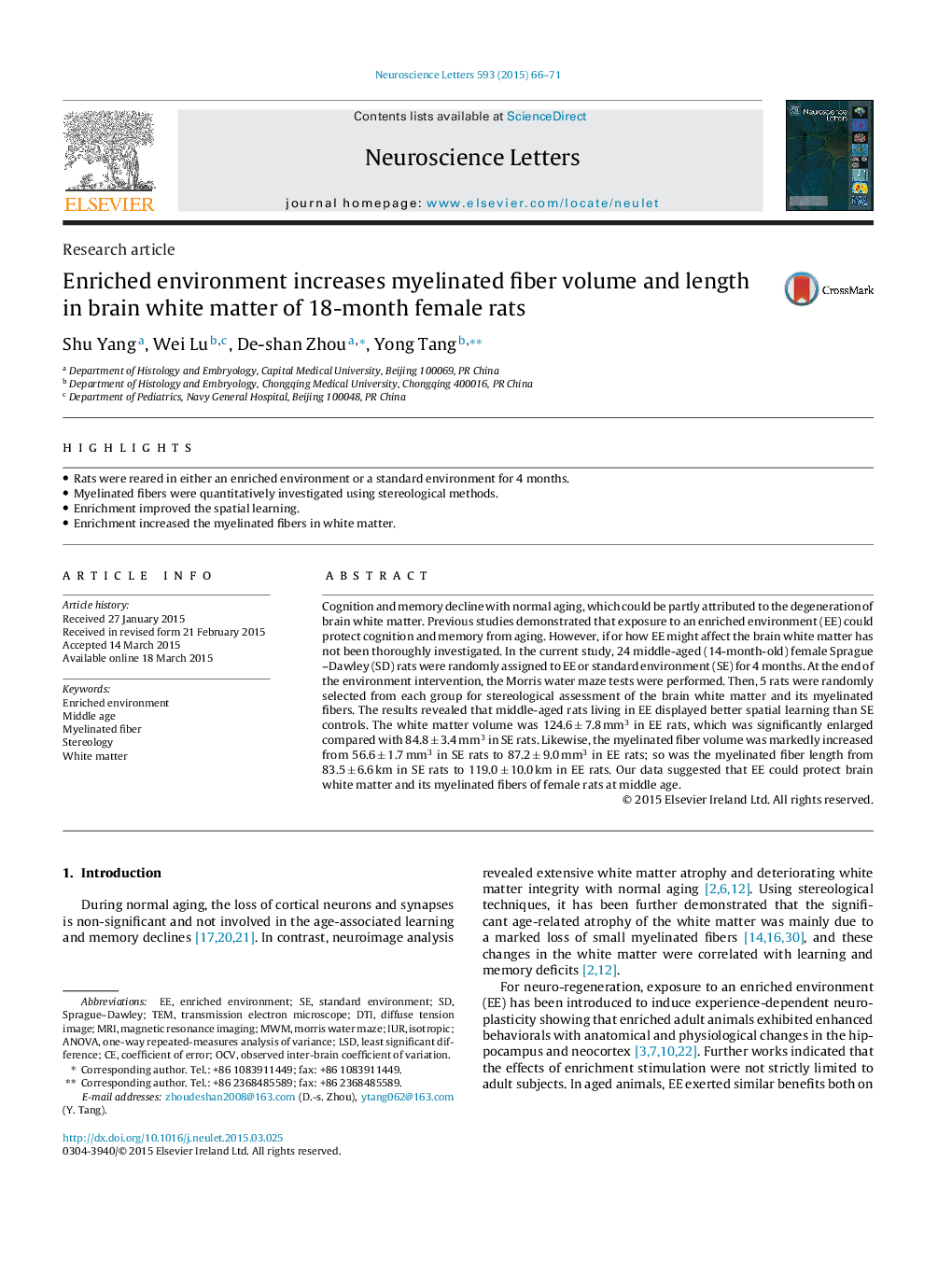| Article ID | Journal | Published Year | Pages | File Type |
|---|---|---|---|---|
| 4343526 | Neuroscience Letters | 2015 | 6 Pages |
•Rats were reared in either an enriched environment or a standard environment for 4 months.•Myelinated fibers were quantitatively investigated using stereological methods.•Enrichment improved the spatial learning.•Enrichment increased the myelinated fibers in white matter.
Cognition and memory decline with normal aging, which could be partly attributed to the degeneration of brain white matter. Previous studies demonstrated that exposure to an enriched environment (EE) could protect cognition and memory from aging. However, if or how EE might affect the brain white matter has not been thoroughly investigated. In the current study, 24 middle-aged (14-month-old) female Sprague –Dawley (SD) rats were randomly assigned to EE or standard environment (SE) for 4 months. At the end of the environment intervention, the Morris water maze tests were performed. Then, 5 rats were randomly selected from each group for stereological assessment of the brain white matter and its myelinated fibers. The results revealed that middle-aged rats living in EE displayed better spatial learning than SE controls. The white matter volume was 124.6 ± 7.8 mm3 in EE rats, which was significantly enlarged compared with 84.8 ± 3.4 mm3 in SE rats. Likewise, the myelinated fiber volume was markedly increased from 56.6 ± 1.7 mm3 in SE rats to 87.2 ± 9.0 mm3 in EE rats; so was the myelinated fiber length from 83.5 ± 6.6 km in SE rats to 119.0 ± 10.0 km in EE rats. Our data suggested that EE could protect brain white matter and its myelinated fibers of female rats at middle age.
